In the wild world of animals some can quite literally, take us out without breaking a sweat. It’s fascinating and terrifying to think about creatures with such raw power and capability. Here are some you should be afraid, very afraid, of.
1. The Silent But Deadly Crocodile
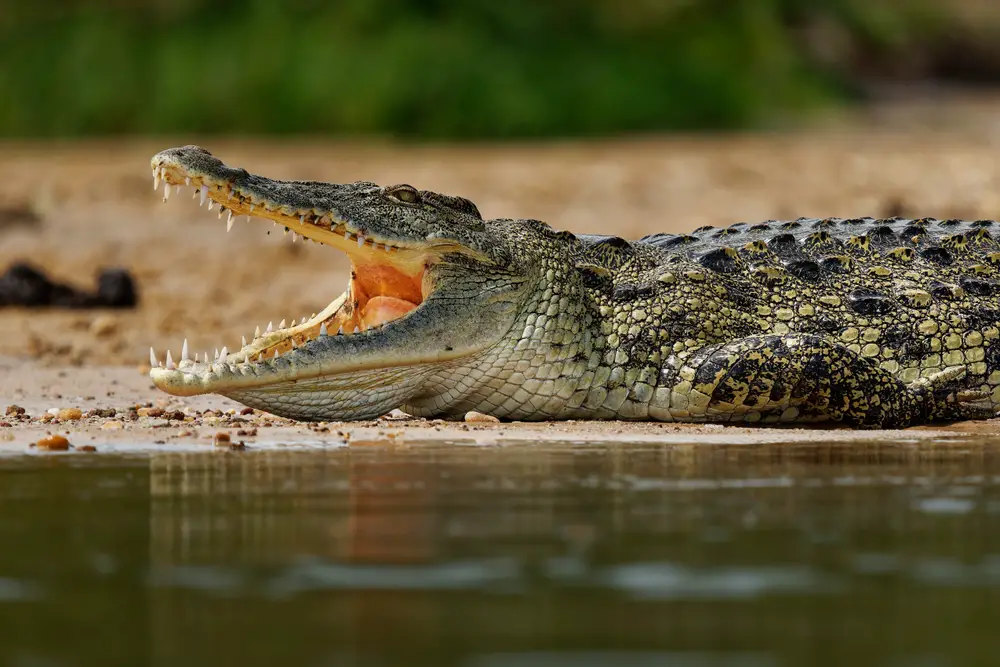
Crocodiles are master ambush predators, lurking in murky waters, waiting for the perfect moment to strike. With one of the strongest bite forces in the animal kingdom, these prehistoric beasts can easily drag prey, including humans, underwater in seconds. A crocodile’s stealth is its greatest weapon; by the time you see one, it’s often too late. You might think you’re safe on land, but these creatures can launch themselves out of the water with surprising speed. They’ve been around for millions of years, and their hunting tactics are perfectly honed for maximum efficiency. According to National Geographic, crocodiles are ambush predators, waiting for fish or land animals to come close before rushing out to attack.
What makes them even more terrifying is their incredible patience and intelligence. Crocodiles learn and adapt, observing the habits of their prey to choose the best time and place for an attack. They can hold their breath for extended periods, making them even more elusive in water. So, next time you’re near a croc-infested area, remember to stay vigilant—they have the upper hand both in and out of the water. Their diet isn’t picky, and unfortunately, humans sometimes end up on the menu.
2. The Stealthy King Of The Jungle: Lions
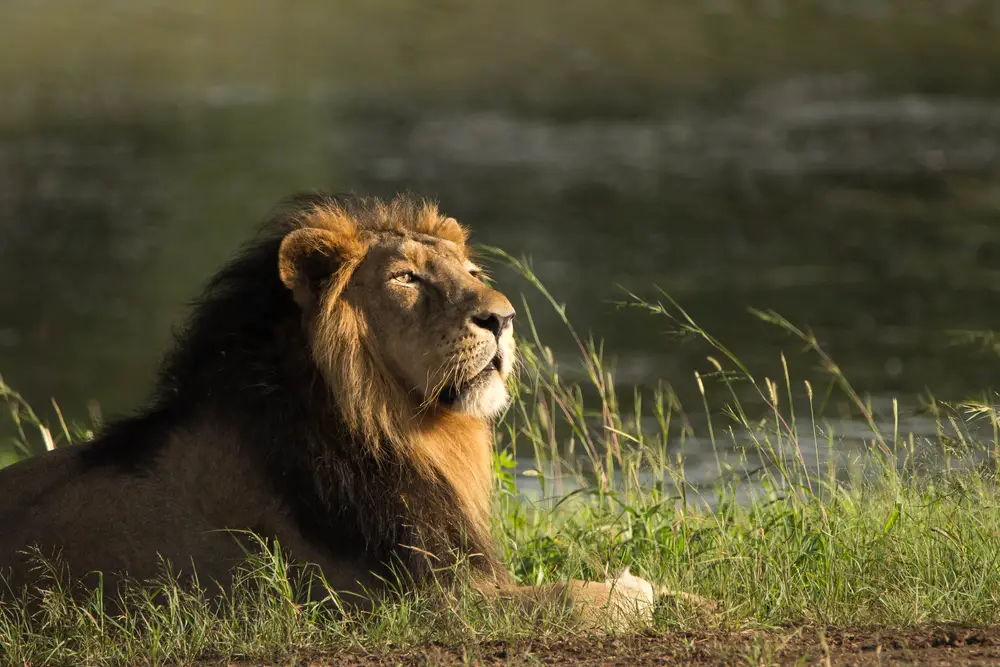
Lions are often referred to as the kings of the jungle, but it’s their power and teamwork that make them apex predators. These big cats are social, hunting in prides that use coordinated strategies to bring down prey much larger than themselves. If a lion sets its sights on you, running isn’t an option; they’re fast, reaching speeds of up to 50 mph in short bursts. Their muscular build isn’t just for show—those powerful legs can cover significant ground in pursuit of food. According to AnimalWised, lions are social animals that hunt in prides, using coordinated strategies to bring down prey much larger than themselves.
While their majestic appearance can be deceptive, remember that lions are skilled hunters with sharp instincts and a keen sense of danger. At night, their vision is remarkably superior, and they can detect movements from quite a distance, giving them an edge over prey. Though they usually don’t see humans as their preferred snack, territorial disputes or defensive maneuvers could lead to an unfortunate encounter. Respect their space, and always remember that you’re a guest in their realm when on a safari.
3. The Water World’s Apex Predator: Sharks
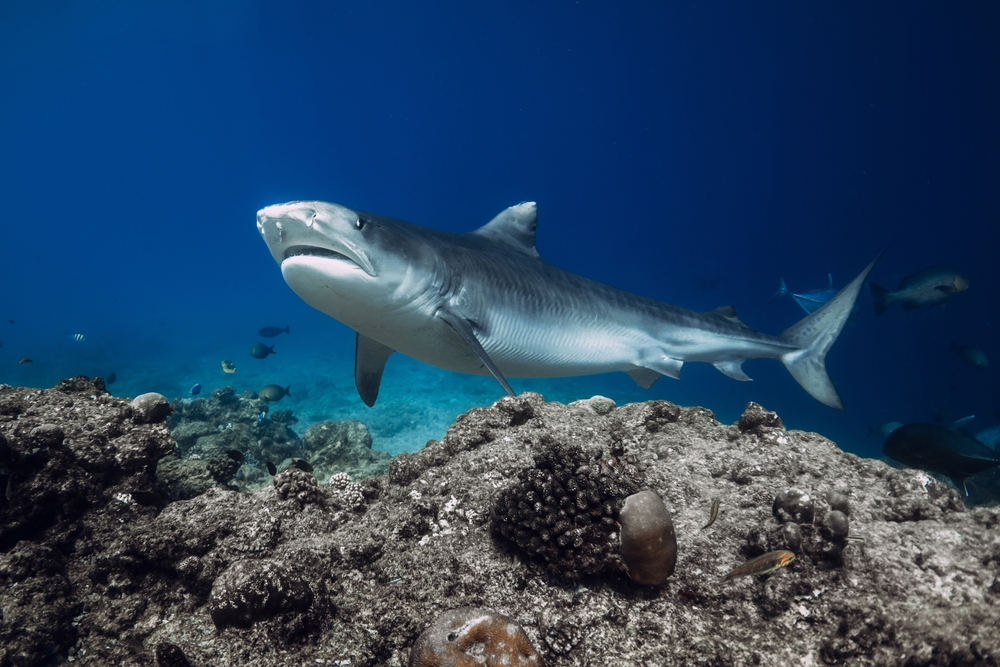
Sharks have long captivated our imaginations and fueled our fears with their reputation as the ocean’s most formidable predators. With an array of sharp teeth and a keen sense of smell, they can detect a drop of blood from miles away. Though attacks on humans are relatively rare, when they do happen, the consequences can be devastating. Great whites, tigers, and bull sharks are among the most notorious species for attacks.
A shark’s sensory system is designed for hunting efficiency; they can sense electrical signals emitted by prey, making them expert trackers. Despite their fearsome reputation, most shark attacks are cases of mistaken identity. They often mistake humans for seals or other prey, and many attacks are simply investigatory bites. Still, the sheer power and unpredictability of these fish make them a risk in the water. So when you’re swimming in their territory, it’s wise to stay cautious and aware.
4. The Unassuming Powerhouse: Hippopotamus
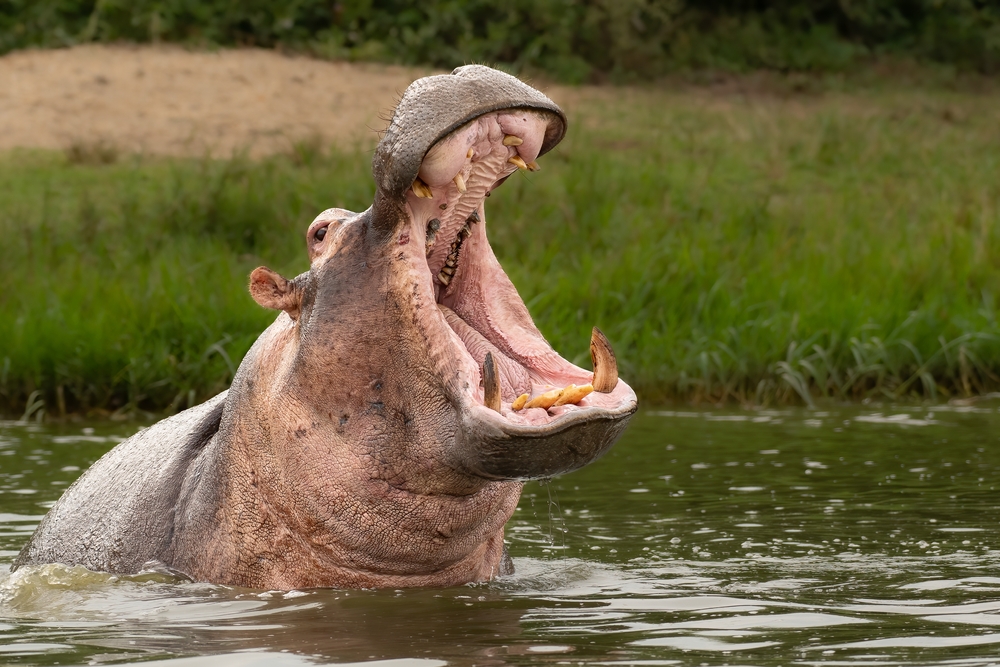
Despite their seemingly docile nature, hippos are among the most dangerous animals in Africa. With their massive size and surprisingly fast speed, they can swiftly charge anyone who gets too close to their territory. They are fiercely territorial and protective, especially when it comes to their young. Hippos have been known to attack boats and humans who unwittingly enter their space, making them a formidable presence in African rivers and lakes.
Their gigantic mouths house enormous teeth that can crush bones effortlessly, and their bite force is one of the strongest in the animal kingdom. While they primarily eat plants, their aggressive behavior is a defensive mechanism for protecting their territory from intruders. Hippos are most dangerous in the water, where they can move with surprising agility. So, if you ever find yourself on a safari, give these hefty giants the respect and distance they demand.
5. The Unforgiving Cape Buffalo
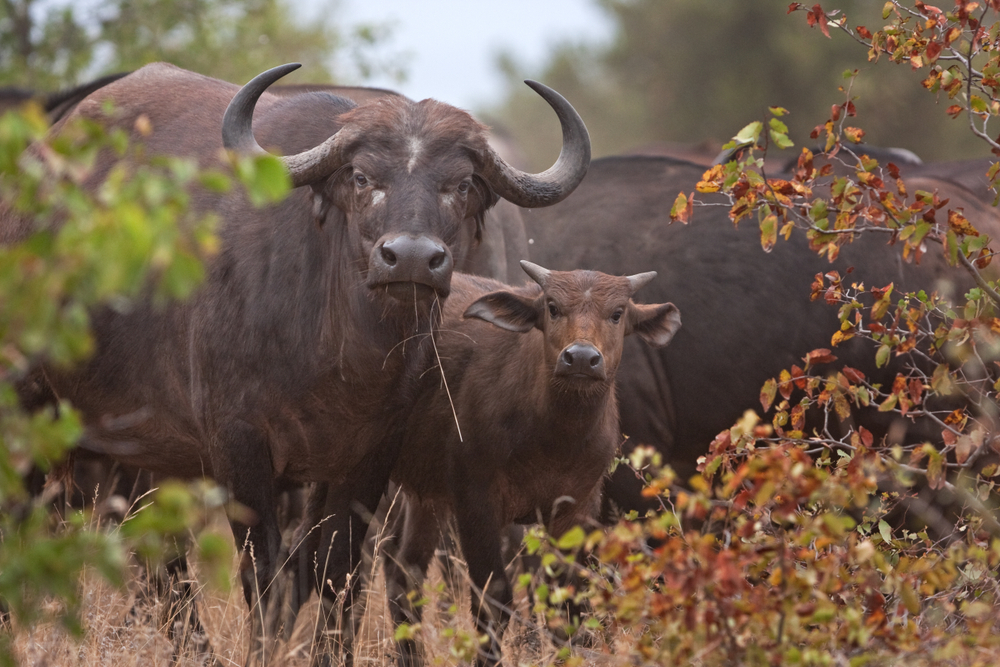
Known as one of Africa’s “Big Five,” the Cape buffalo is a force of nature that demands respect. These large bovines can weigh up to 1,500 pounds and have a notorious reputation for being unpredictable and aggressive when threatened. They often travel in herds, which might seem safe from afar, but a disturbed buffalo can charge with incredible speed and force. Their horns are their primary weapon, capable of goring and trampling perceived threats without hesitation.
While they might appear calm while grazing, they have keen senses and a strong protective instinct, especially towards their young. Hunters, unfortunately, know these animals as “black death” because of their tendency to ambush and attack when provoked. Despite their seemingly gentle facade, they have been responsible for more hunter fatalities than any other African animal. When in their presence, it’s best to maintain a safe distance and respect their space.
6. The Colossal Master Of The Ocean: Orcas
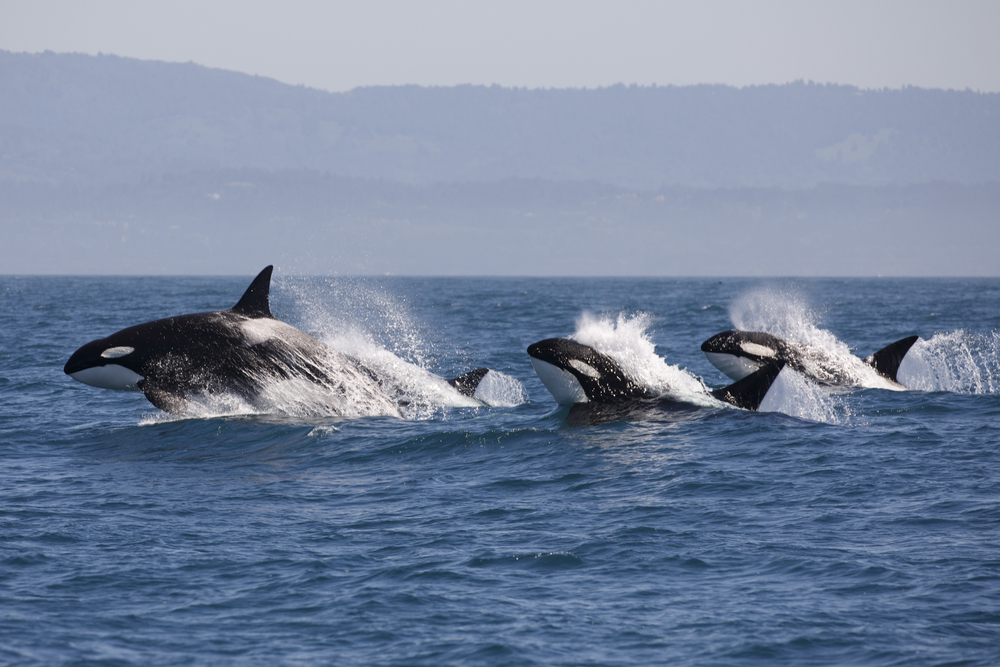
Orcas, or killer whales, are the ocean’s apex predators, known for their intelligence and complex social structures. These powerful creatures hunt in pods, using sophisticated techniques to capture a wide variety of prey, from fish to large mammals like seals and even whales. Their strength and speed are unparalleled in the water, allowing them to execute precise, coordinated attacks. Despite their name, attacks on humans are extremely rare, but their predatory prowess is undeniable.
Orcas have an intricate communication system, using clicks and whistles to coordinate hunts and maintain tight-knit relationships within their pods. Their ability to adapt and learn makes them one of the most intelligent creatures in the ocean, capable of problem-solving and strategizing. While they are not a direct threat to humans in the wild, their sheer power and hunting skills make them a formidable presence in their marine realm. It’s a reminder that the ocean is home to creatures with capabilities beyond our imagination.
7. The Relentless Hunters: Hyenas
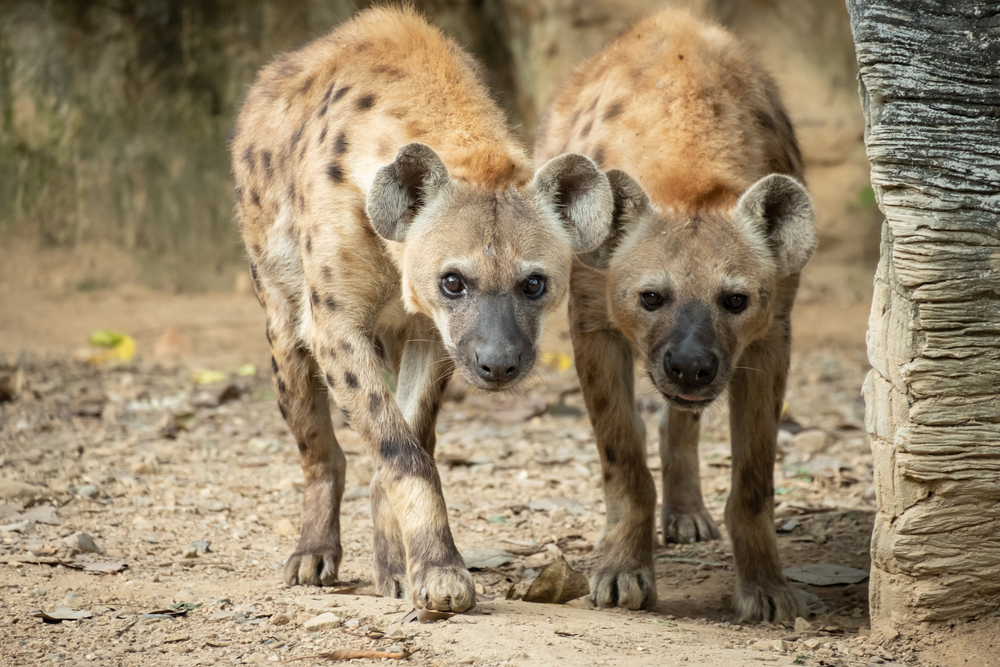
Hyenas often get a bad rap due to their scavenging habits, but they are also skilled hunters with a strategic edge. These animals have powerful jaws capable of crushing bones, and they operate in packs, making them efficient killers. While they might not top the list of Africa’s most feared predators, they are capable of taking down prey much larger than themselves, and they won’t hesitate to attack if threatened or cornered.
Their social structure is fascinating, with a complex hierarchy often led by a dominant female. Hyenas communicate through a series of vocalizations, including their infamous “laugh,” which can convey everything from excitement to aggression. Although they usually prey on other animals, hyenas have been known to come into conflict with humans, particularly in rural areas where livestock is abundant. It’s a stark reminder that these cunning creatures are not to be underestimated.
8. The Ruthless Box Jellyfish
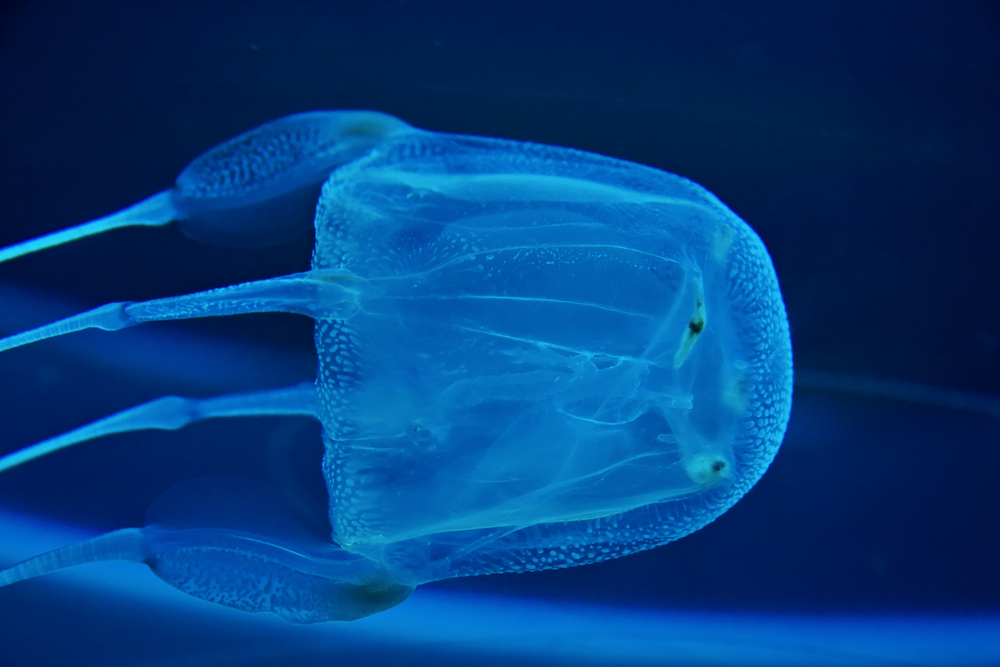
Box jellyfish are among the most venomous creatures on the planet, with tentacles laden with toxins capable of causing heart failure in humans. Found primarily in the waters of the Indo-Pacific, these translucent animals are nearly invisible, making them easy to accidentally swim into. Their venom attacks the heart, nervous system, and skin cells, often leading to excruciating pain and sometimes fatal outcomes for swimmers caught unaware.
Despite their delicate appearance, box jellyfish have a complex nervous system, allowing them to navigate and hunt with surprising efficiency. They feed on small fish and invertebrates, using their venom to immobilize prey quickly. For humans, a sting can be fatal without immediate medical attention, and even survivors often describe the experience as horrendously painful. When swimming in areas where they’re known to inhabit, wearing protective clothing and staying vigilant is crucial.
9. The Mighty Elephant
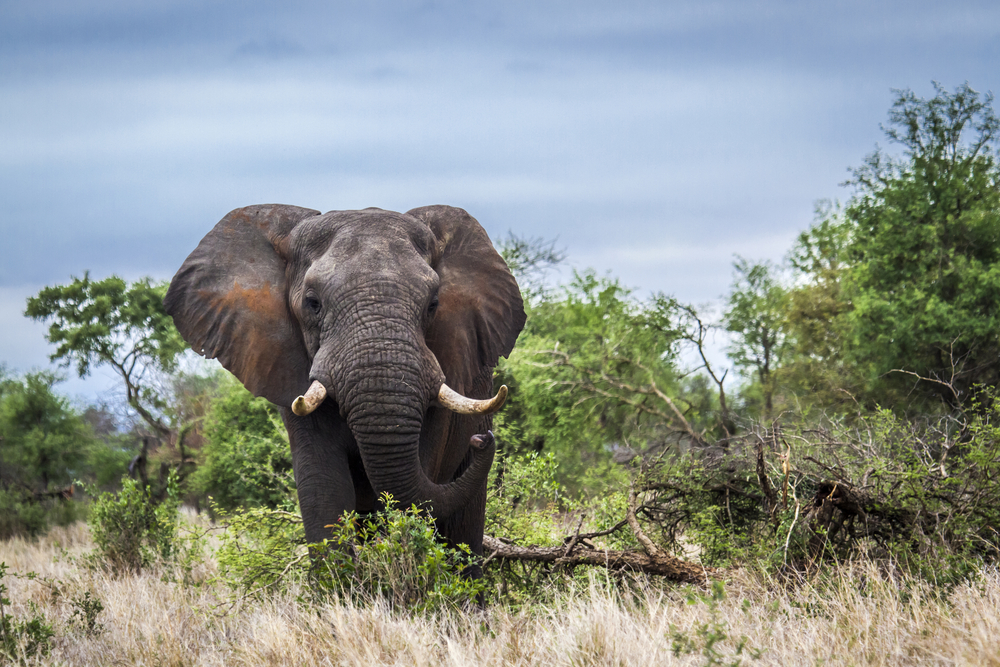
Elephants are known for their intelligence and gentle nature, but they are also capable of immense power and aggression when provoked. These majestic creatures can weigh up to 14,000 pounds, and their sheer size makes them a force to be reckoned with. While they are typically peaceful, they can become aggressive, especially if threatened, stressed, or protecting their young. A charging elephant can cause significant destruction, and their tusks are formidable weapons.
In the wild, elephants have complex social structures and strong bonds within their herds. They communicate using low-frequency rumbles that can be heard over long distances, coordinating movements and warnings among the group. Unfortunately, human-elephant conflicts do occur, often due to habitat encroachment, leading to dangerous encounters. It’s essential to respect these giants by giving them space and understanding that their actions are often defensive rather than aggressive.
10. The Cunning Leopard
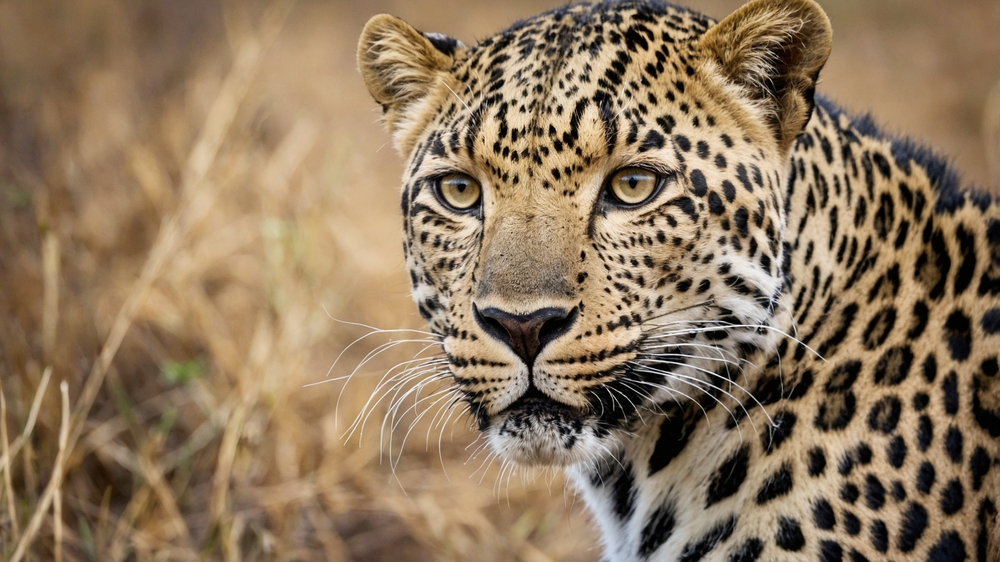
Leopards are solitary hunters, adaptable to various environments and known for their stealth and strength. They are incredibly elusive, capable of dragging prey twice their body weight into trees to avoid scavengers. While they typically avoid humans, they are opportunistic hunters and can become dangerous if provoked or if they see humans as a viable food source. Their rosette-covered coat provides excellent camouflage, making them difficult to spot in the wild.
Despite their solitary nature, leopards are highly adaptable, thriving in diverse habitats ranging from rainforests to urban areas. They have a vast diet, feeding on anything from insects to large ungulates, and their adaptability has allowed them to survive in areas where other big cats might struggle. Leopard attacks on humans are rare but not unheard of, particularly in regions where their habitat overlaps with human settlements. Respect for their space and awareness of their presence is crucial to avoid unwanted encounters.
11. The Venomous King Cobra
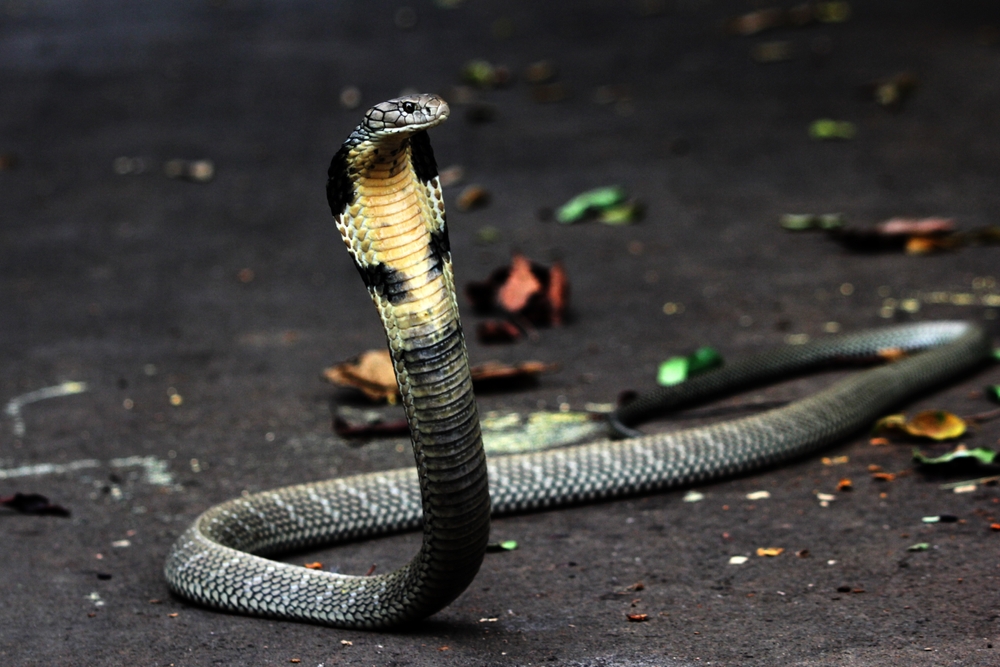
The king cobra is the longest venomous snake in the world, and its bite can be fatal within hours if untreated. Found in forests across Southeast Asia, this snake can raise a third of its body off the ground, making it a formidable presence. The venom of a king cobra is potent, affecting the respiratory centers in the brain, leading to respiratory failure. Despite their venomous nature, they are generally shy and avoid humans when possible.
King cobras are intelligent snakes, often showing signs of curiosity and awareness of their surroundings. They primarily feed on other snakes and can be quite territorial, especially during mating season. While they are not aggressive by nature, they will defend their territory fiercely if threatened. Avoiding dense forest floors where they might reside and keeping a safe distance are wise precautions when exploring their natural habitat.
12. The Aggressive Saltwater Crocodile
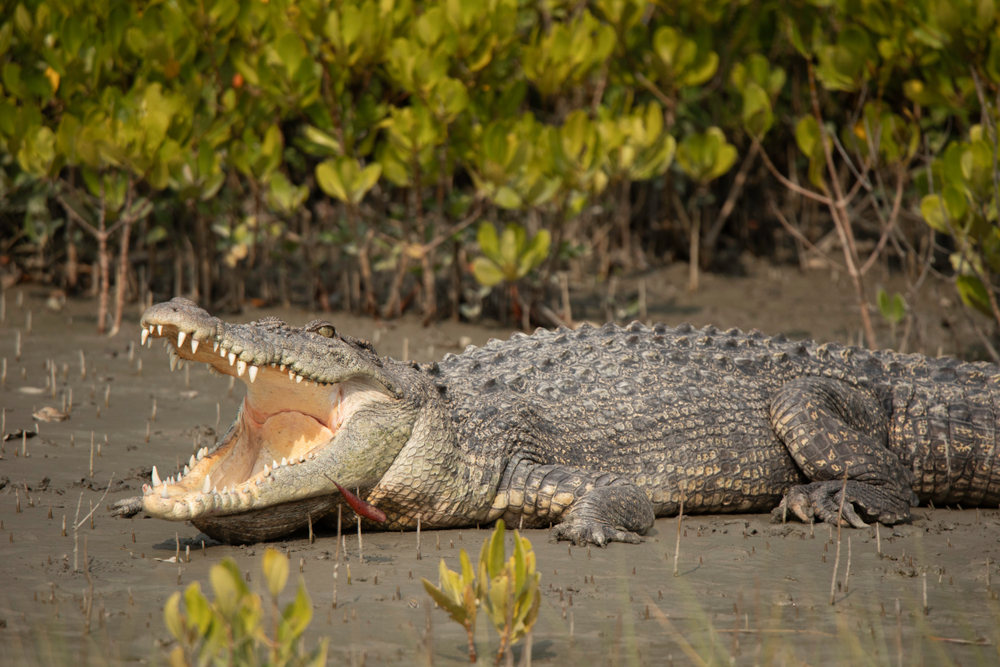
Saltwater crocodiles, or “salties,” are the largest living reptiles, capable of growing over 20 feet long and weighing more than a ton. Found in the waters of Southeast Asia and northern Australia, these apex predators are incredibly aggressive and territorial. Their bite force is among the strongest of any animal, capable of crushing bones with ease. Encounters with humans often occur near water’s edge, where these crocodiles lurk in wait for unsuspecting prey.
Their ability to remain submerged for extended periods makes them exceptional ambush predators. Salties have been known to hunt and attack anything within reach, including humans who stray too close to their domain. While attacks are relatively rare, they are often fatal due to the crocodile’s strength and strategic hunting methods. Awareness and respect for their habitat are critical in areas where saltwater crocodiles are present.
13. The Voracious Grizzly Bear
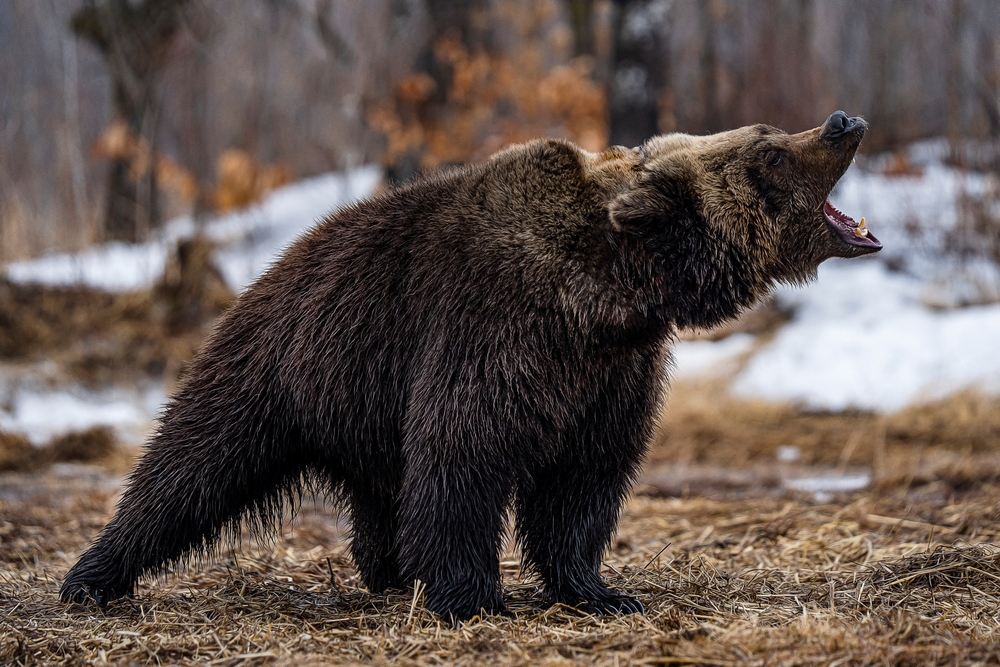
Grizzly bears are powerful omnivores, capable of reaching speeds of up to 35 mph despite their massive size. Native to North America, these bears have keen senses of smell and hearing, making them effective hunters and gatherers. While they usually avoid humans, grizzlies can become aggressive if surprised or if they perceive a threat to their cubs. Their strength and speed make them a significant danger in their natural habitat.
Despite their fearsome reputation, grizzlies are often misunderstood, with many attacks being defensive rather than predatory. They are solitary creatures, except during mating season or when raising cubs, and they require vast territories to thrive. Human encounters often occur when hikers or campers inadvertently come too close, startling the bear. Respect for their space and understanding bear safety protocols are essential to prevent unwanted confrontations.
14. The Deadly Black Mamba
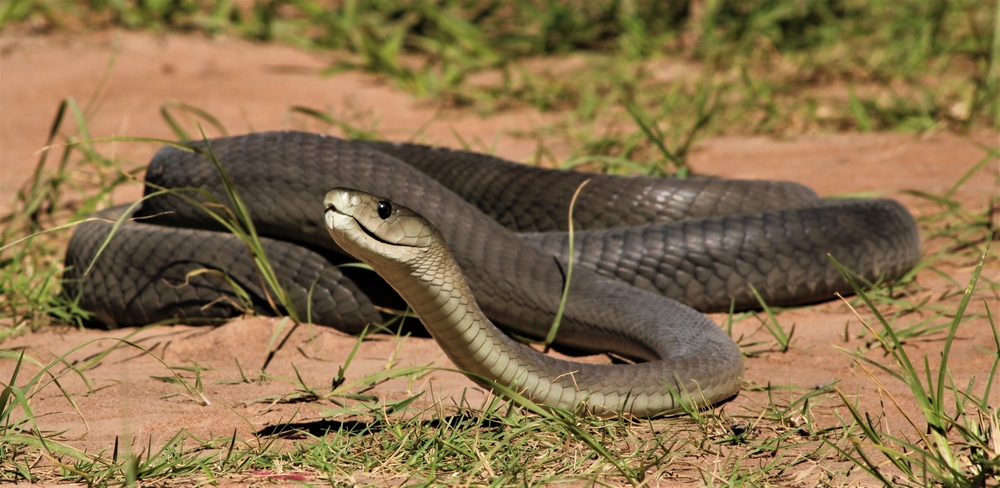
The black mamba is one of the most feared snakes in Africa, known for its speed, agility, and potent venom. Capable of striking multiple times in a single attack, this snake can deliver enough venom to kill several humans with one bite. Despite its menacing reputation, black mambas are generally shy and will flee when given the chance. However, when cornered or threatened, they become extremely aggressive and dangerous.
Their name derives from the dark coloration inside their mouth, which they display as a warning when threatened. Black mambas are both terrestrial and arboreal, allowing them to hunt and evade threats with ease. While they usually avoid human contact, habitat encroachment can lead to encounters. Treating their environment with caution and remaining vigilant are the best ways to avoid an encounter with this deadly serpent.
15. The Mighty Polar Bear
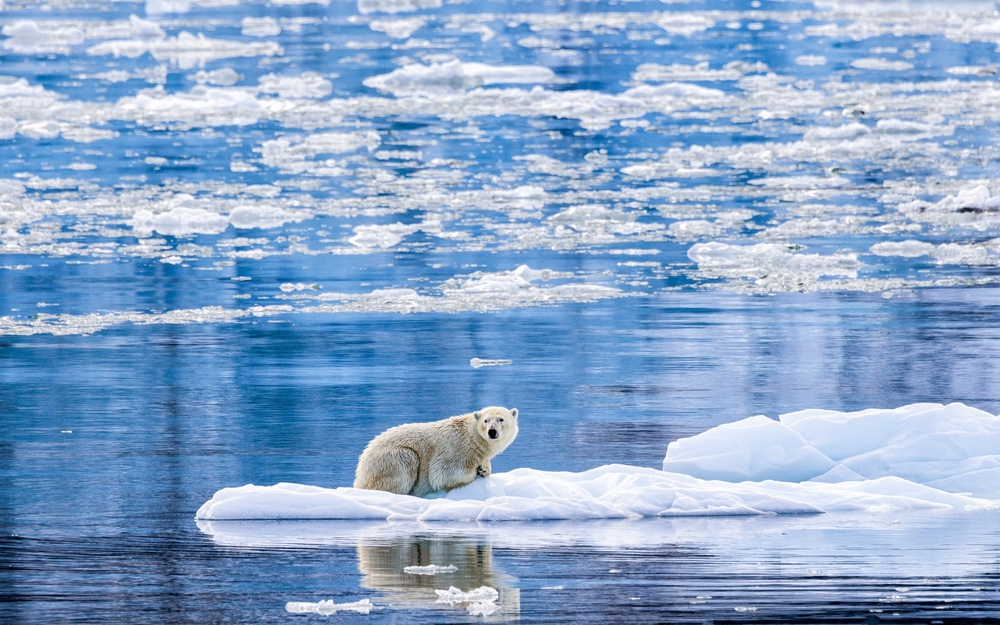
Polar bears are the largest land carnivores, renowned for their strength and hunting prowess in the Arctic. These majestic creatures rely on sea ice to hunt seals, their primary food source, and are uniquely adapted to survive in harsh polar conditions. While they rarely encounter humans due to their remote habitat, polar bears can be incredibly dangerous if they perceive humans as prey or if they are defending their territory.
Despite their powerful stature, polar bears are vulnerable to the impacts of climate change, with melting ice reducing their hunting grounds. Their curiosity and intelligence often lead them to explore human settlements in search of food. While they are not naturally aggressive towards humans, their size and strength mean any encounter can be perilous. Understanding these magnificent animals and respecting their habitat is crucial for coexisting safely in their icy realm.
